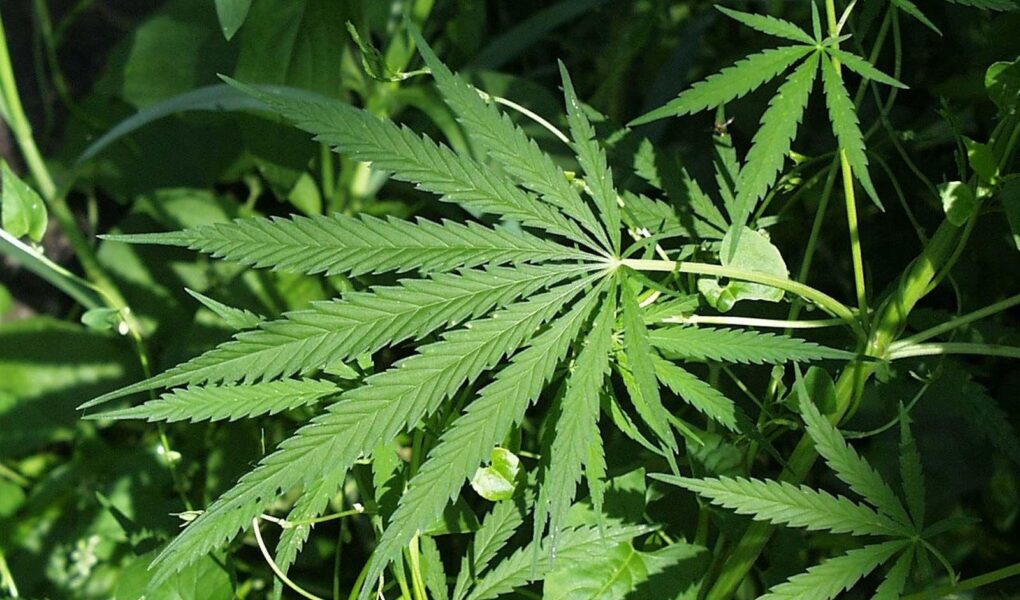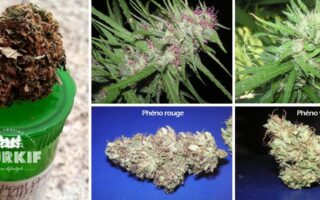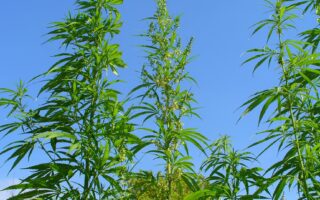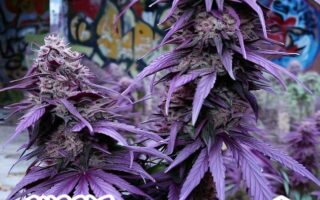In the lush, verdant tapestry of the modern botanical world, few plants have garnered as much fascination, debate, and devotion as cannabis. Often referred to as “mother cannabis,” this remarkable plant serves not only as a source of enjoyment and healing but also stands as a resilient symbol of cultural evolution and social change. From ancient rituals to contemporary wellness practices, its multifaceted presence in human history underscores the complex relationship we share with nature. In this exploration, we delve into the rich heritage, diverse applications, and ongoing dialogue surrounding mother cannabis, illuminating its role as a nurturing figure in both agricultural and medicinal landscapes. Join us as we uncover the stories, science, and spirit of this extraordinary plant that continues to shape our understanding of health, community, and sustainability.
Table of Contents
- Exploring the Nurturing Role of Mother Cannabis in Cultivation
- Understanding Genetic Traits Passed by Mother Cannabis
- Best Practices for Selecting and Maintaining Mother Cannabis Plants
- Maximizing Yield and Quality: Care Tips for Mother Cannabis Cultivation
- Q&A
- In Conclusion
Exploring the Nurturing Role of Mother Cannabis in Cultivation
The role of the female cannabis plant, often referred to as “Mother Cannabis,” is pivotal in the cultivation process. This plant serves as a genetic reservoir, offering invaluable traits that can be passed down to her clones. By nurturing high-quality mother plants, growers can ensure the production of consistent and potent offspring. Some key benefits of cultivating mother cannabis include:
- Genetic Consistency: Clones derived from a mother plant will maintain the desired characteristics, ensuring a reliable crop.
- Cost Efficiency: Maintaining a single mother can produce numerous clones, reducing the need for constant seed purchases.
- Time-Saving: Clones typically mature faster than seeds, allowing for quicker harvest cycles.
Moreover, cultivating mother cannabis emphasizes the importance of proper care and environmental factors. A thriving mother plant requires optimal light, nutrients, and soil conditions to flourish. To maintain her health and vigor, growers should adhere to the following guidelines:
| Factor | Ideal Condition |
|---|---|
| Light Cycle | 18-24 hours of light |
| Nutrients | High nitrogen during vegetative stage |
| Humidity | 40-60% during vegetative growth |
By providing these essential conditions, cultivators can maximize their yield and ensure that “Mother Cannabis” continues to play her vital role in sustainable and successful cannabis cultivation.
Understanding Genetic Traits Passed by Mother Cannabis
The genetic makeup of a cannabis plant is a complex interplay of traits inherited from both its parent strains. However, the mother plant plays a pivotal role in determining specific characteristics that will be passed on to its offspring. When you breed cannabis, the traits that you can expect from the progeny are largely influenced by the mother’s genetics. These traits may include:
- Aroma and Flavor: The enticing scent and taste profiles that make certain strains popular are heavily inherited from the mother.
- Growth Habit: Whether a plant grows tall and lanky or short and bushy can often be traced back to the mother’s lineage.
- Resilience and Disease Resistance: The hardiness of a strain against pests and diseases often comes from the genetic strength of the mother plant.
- THC and CBD Levels: The cannabinoid profile, which dictates the psychoactive effects and therapeutic benefits of the strain, is influenced substantially by the mother.
To better understand how these traits manifest, a simplified table can illustrate the typical genetic traits passed down through mothers in different strain categories. Consider this example:
| Mama Strain | Dominant Trait | Expected Offspring Outcome |
|---|---|---|
| Blue Dream | Aromatic Blueberry | Fruity flavor profile |
| Girl Scout Cookies | Relaxing Effects | Balanced THC/CBD |
| Sour Diesel | High Energy | Cerebral high with diesel notes |
Best Practices for Selecting and Maintaining Mother Cannabis Plants
Choosing the right mother cannabis plants is essential for successful cultivation and strain preservation. Start by selecting genetics that exhibit desirable traits such as robust growth, high cannabinoid content, and resilience against pests and diseases. Ideally, you should seek out plants that have been observed over generations, allowing you to understand their growth patterns and flowering times. Diversity is key, so consider maintaining multiple strains to safeguard against potential issues affecting any single cultivar. Additionally, regularly monitoring for any signs of stress or deficiency can help you make timely decisions regarding plant health and propagation.
Once you have established your mother plants, proper maintenance becomes a top priority. Regular pruning is essential to ensure healthy growth and to facilitate easier cloning. Aim to keep the plants in their vegetative state by ensuring they receive adequate light and nutrients. A well-structured watering schedule is crucial; plants should never be overwatered or underwatered. Integrating IPM (Integrated Pest Management) practices can help keep your mother plants free of pests while promoting a healthy growing environment. Here’s a simple table for your reference:
| Best Maintenance Practices | Frequency |
|---|---|
| Watering | Every 3-5 days |
| Pruning | Every 2-4 weeks |
| Nutrients Check | Every week |
| Pest Inspection | Every few days |
Maximizing Yield and Quality: Care Tips for Mother Cannabis Cultivation
Cultivating mother cannabis plants is an art that requires keen attention to detail and proactive care. To ensure that your mother plants are healthy and produce high-quality clones, consider the following essential tips:
- Strain Selection: Choose a strain known for its resilience and desirable traits.
- Optimal Lighting: Provide consistent light cycles using full-spectrum LED or fluorescent lights to promote healthy growth.
- Temperature and Humidity Control: Maintain ideal temperatures between 70-85°F (20-29°C) with humidity levels at 40-60%.
- Fertilization: Use low-nitrogen, high-phosphorus fertilizers during the vegetative stage for robust root development.
Another crucial aspect of maximizing the yield and quality of your mother plants is maintaining proper pruning techniques and pest management. Prune regularly to remove any dead or diseased leaves, promoting air circulation and light penetration to the inner canopy. Implement a weekly inspection schedule for pests and diseases, focusing on organic methods whenever possible. Utilizing companion planting with herbs such as mint or basil can naturally deter pests.
| Pest | Control Method |
|---|---|
| Spider Mites | Neem Oil Spray |
| Fungus Gnats | Sticky Traps |
| Whiteflies | Insecticidal Soap |
Q&A
Q&A: Exploring the Wonders of “Mother Cannabis”
Q1: What exactly is “Mother Cannabis”?
A1: “Mother Cannabis” refers to a well-established female cannabis plant that serves as a source for clones. These mother plants are the backbone of many cannabis cultivation operations, as they provide a consistent genotypic representation of a particular strain. Growers keep these plants healthy and productive, allowing them to propagate new plants while retaining the desirable characteristics of the original strain.
Q2: Why do growers prefer using mother plants over seeds?
A2: Growers often prefer mother plants because cloning delivers a genetically identical copy of the original plant, ensuring the same desirable traits are passed on. Clones can produce flowers faster than seeds, reducing the time it takes to yield a harvest. Additionally, using clones can help ensure consistency in cannabinoid and terpene profiles, making it easier to maintain quality across crops.
Q3: How do growers take care of mother cannabis plants?
A3: Caring for mother cannabis plants involves providing optimal conditions such as consistent lighting, temperature, humidity, and nutrient levels. They are generally kept in a vegetative state, meaning they receive around 18-24 hours of light daily. Regular pruning is essential to promote a bushy growth pattern, ensuring the plant can produce plenty of healthy cuttings. Growers also monitor for pests and diseases to keep the mother plant vigorous and thriving.
Q4: What are the benefits of keeping a mother plant?
A4: Keeping a mother plant allows growers to have reliable access to a specific strain without having to grow from seeds each time. This not only saves time but also helps in achieving a more predictable yield. Furthermore, by maintaining a mother plant, growers can experiment with different cultivation techniques and optimize their practices based on how the clones perform.
Q5: Are there any downsides to maintaining mother cannabis plants?
A5: While beneficial, maintaining mother cannabis plants requires dedication and resources. They need regular care and attention, which can become time-consuming. Additionally, if not properly managed, mother plants can develop issues such as nutrient deficiencies or diseases, which can jeopardize the quality and quantity of the cuttings taken. It is also important for growers to periodically replace their mother plants, as older plants can lose vigor and yield poorer clones over time.
Q6: Can a mother cannabis plant produce different strains?
A6: No, a mother cannabis plant is a single strain. However, growers can select various mother plants from different strains and maintain them simultaneously within their grow operation. This allows them to produce a diverse range of clones while preserving the distinct characteristics of each strain. The creativity and strategic selection of different mother plants can lead to a thriving and varied cannabis cultivation venture.
Q7: How long can a mother cannabis plant live?
A7: With proper care, a mother cannabis plant can live for several years—typically between 3 to 5 years. However, growers may choose to replace them sooner based on their productivity, health, and the shifting needs of their cultivation projects. Replacing older plants helps ensure that the genetic material remains robust and capable of producing high-quality clones.
Q8: What’s the future for mother cannabis plants in cultivation?
A8: As cannabis cultivation continues to evolve, the role of mother plants is also adapting. Advances in agricultural technology, such as tissue culture and breeding innovations, may shift how growers propagate plants in the future. However, the fundamental practice of cloning from mother plants remains a core aspect of cultivation for many, allowing growers to maintain their prized strains while exploring new possibilities in the evolving cannabis landscape.
Conclusion:
Mother cannabis plants are integral to the world of cultivation, offering countless opportunities to harness the unique qualities of various strains. By understanding their care, benefits, and future, both novice and seasoned growers can appreciate the artistry and science behind these remarkable plants.
In Conclusion
As we conclude our exploration of the multifaceted role of “mother cannabis,” it’s clear that this remarkable plant is more than just a source of raw material; it embodies a rich tapestry of culture, medicine, and sustainable practices. From its ancient roots in traditional healing to its burgeoning presence in modern wellness and industry, the story of cannabis is one of resilience and adaptation. Whether viewed through the lens of a caregiver, an environmental steward, or a curious consumer, the relationship we cultivate with mother cannabis shapes not only our individual experiences but also the broader narrative of our society. As we navigate the evolving landscape of cannabis, let us approach this plant with respect and understanding, recognizing its potential to foster connection and promote well-being for generations to come. The journey doesn’t end here; it is just the beginning of a deeper dialogue about our relationship with this extraordinary green ally.



